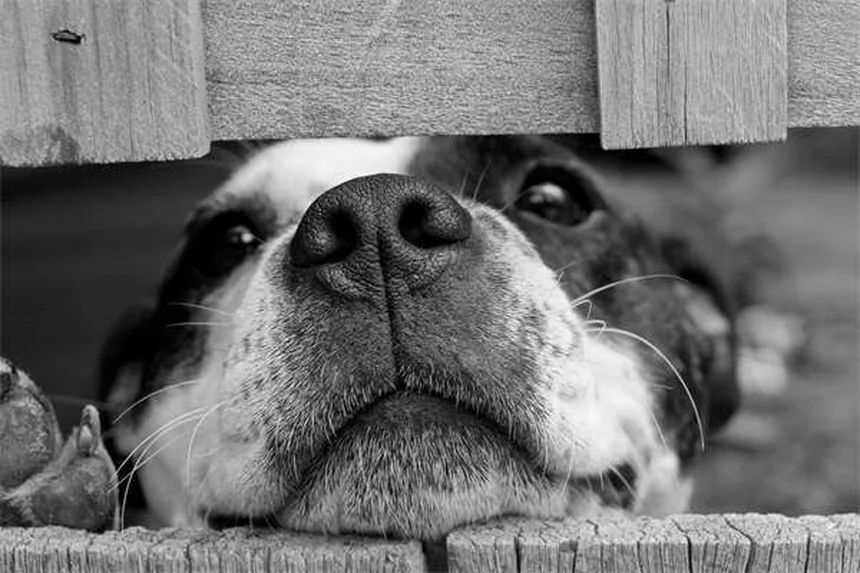Is your cat overweight? The answer might surprise you! Many cat owners don't realize their feline friends are carrying extra pounds until health problems appear. Here's the deal: about 60% of cats in the U.S. are overweight or obese, and that extra weight can shave years off their lives. But don't worry - I'm going to show you exactly how to check your cat's weight at home using the same system vets use.We'll break down the Body Condition Score (BCS) system into simple steps anyone can follow. You'll learn how to spot the signs of an overweight cat, understand why it matters, and discover what to do about it. The best part? You don't need any special equipment - just your eyes, hands, and maybe a few treats to keep your cat cooperative!
E.g. :Kitten Deworming Guide: 5 Must-Know Tips for Healthy Cats
Hey there fellow cat lover! I know it's tough to admit when our furry friends might be packing on a few extra ounces, but trust me, this chat could add years to your cat's life. Let's make this fun and easy to understand - no vet degree required!
You might think weighing your cat gives you all the answers, but here's the scoop: weight alone doesn't paint the full picture. My neighbor's Maine Coon weighs 15 pounds and is perfectly healthy, while my cousin's tabby at 12 pounds looks like a furry football!
Vets use something super cool called the Body Condition Score (BCS) system. It's like a BMI for cats, but way more accurate because it considers your cat's unique body shape. The best part? You can learn to do this at home between belly rub sessions!
Picture this: a scale from 1 to 9 where 5 is purr-fect. The system works whether your cat is a tiny Siamese or a giant Ragdoll. We're talking about body shape here, not just numbers on a scale.
Here's a quick comparison to help you visualize:
| BCS Score | What It Means | What You'll Notice |
|---|---|---|
| 1-4 | Underweight | Bones very visible, extreme waist |
| 5 | Ideal Weight | Slight waist, ribs felt but not seen |
| 6-9 | Overweight | No waist, belly sways, ribs buried |
 Photos provided by pixabay
Photos provided by pixabay
A BCS 5 cat is the feline equivalent of an Olympic athlete - in perfect shape! From the side, their belly has a gentle upward curve toward their back legs. From above, you'll see a nice hourglass figure (though your cat might object to that description!).
Run your hands along their sides - you should feel ribs like you're petting a corduroy couch, not a xylophone or a marshmallow. Their backbone should feel like speed bumps on a country road - there but not dramatic.
BCS 1-4 cats need some TLC and probably more calories. You'll notice their ribs standing out like a washboard, and their waist looking like an exaggerated hourglass. Ever seen a cat that looks like a furry skeleton? That's a BCS 1.
But here's something interesting - did you know some older cats appear thin because of health issues, not lack of food? That's why regular vet checkups are crucial!
Now for the group we see most often - the pleasantly plump kitties. From above, they look like a loaf of bread rather than an hourglass. Their belly swings like a pendulum when they walk, and forget about feeling ribs - it's like searching for your keys in a down comforter!
Here's a funny test: if your cat tries to jump on the couch and it sounds like someone dropped a sack of potatoes, we might need to talk about weight management.
 Photos provided by pixabay
Photos provided by pixabay
Let me ask you something: would you make your cat run a marathon with a backpack full of rocks? Of course not! But that's essentially what extra weight does to their little bodies every single day.
Overweight cats face serious health risks like diabetes (no, they can't just stop eating sugar - it doesn't work that way!), painful arthritis, and heart problems. The good news? Even losing just 10% of their body weight can make a huge difference!
I'll never forget Mr. Whiskers, a cat who lost 3 pounds (that's like a human losing 30!). His owner started with simple changes - measured meals instead of free-feeding and 5-minute play sessions twice daily. Within six months, he went from struggling to jump on the bed to leaping like a kitten!
Think of your vet as your personal cat fitness trainer. They can spot weight changes before you notice them - sometimes just by the way your cat walks into the exam room! Plus, they'll rule out medical causes for weight gain like thyroid issues.
Here's a pro tip: take monthly photos of your cat from above and the side. It's amazing how gradual changes escape our notice until we see them side by side!
 Photos provided by pixabay
Photos provided by pixabay
Every cat is unique - what works for a lazy Persian won't work for an energetic Bengal. Your vet can help design a plan that considers your cat's age, breed, and personality. Maybe it's puzzle feeders to slow down eating, or switching to wet food for better portion control.
Remember, crash diets are dangerous for cats! Safe weight loss is about 1-2% of body weight per week. Your vet will help set realistic goals and monitor progress.
Who says exercise has to be boring? Try hiding small portions of kibble around the house so your cat has to "hunt" for meals. Use food-dispensing toys that make them work for their snacks. Even simple things like moving the food bowl to different locations can add steps to their day!
Find toys that trigger your cat's natural instincts. Feather wands, laser pointers (always end with a tangible reward!), or even crumpled paper balls can get them running and jumping. Aim for three 5-minute play sessions daily - it adds up!
Here's a funny observation: the same cat who sleeps 18 hours a day will suddenly turn into a ninja warrior when you drag a string across the floor. Use this to your advantage!
Sudden weight gain or loss always warrants a vet visit. Other warning signs include changes in appetite, drinking habits, or energy levels. If your cat stops grooming hard-to-reach areas (common in overweight cats), it's time for a checkup.
Senior cats, kittens, and cats with health conditions need customized approaches. For instance, an arthritic cat might need low-impact exercise like swimming in a shallow tub (yes, some cats tolerate water!). Your vet can suggest creative solutions.
At the end of the day, remember this: your cat's health journey is a marathon, not a sprint. Celebrate small victories, be patient with setbacks, and keep working with your vet. Before you know it, you'll have a happier, healthier feline friend who might just live longer to show their appreciation (or continue ignoring you - because, well, cats!).
Ever wonder why your chubby kitty hesitates before jumping onto the couch? Those extra pounds put immense pressure on their tiny joints. For every pound over ideal weight, their joints endure the equivalent of a human carrying an extra 5-7 pounds!
Here's something most cat owners don't realize: arthritis can start developing in overweight cats as young as 5 years old. That's like a 35-year-old human needing a knee replacement! The cartilage wears down faster, leading to painful inflammation that makes movement even harder - creating a vicious cycle of weight gain and inactivity.
Did you know feline diabetes cases have skyrocketed by over 200% in the past decade? It's not just about sugar - it's about how their entire metabolism gets thrown out of whack.
Here's how it works: excess fat makes their body resistant to insulin, the hormone that regulates blood sugar. Soon, their pancreas can't keep up, and bam - diabetes. The scary part? Many cats show no obvious symptoms until it's advanced. Twice-daily insulin shots and special diets become their new normal.
I get it - keeping the bowl full seems convenient and kind. But here's the truth: most domestic cats have lost their natural ability to regulate food intake. In the wild, they'd hunt 10-20 small meals daily. That empty bowl triggers their survival instinct to overeat "just in case."
Try this experiment: measure out their daily portion in the morning and divide it into 4-5 small meals. You'll be shocked at how quickly they adapt to scheduled feedings. Bonus? You'll finally know exactly how much they're eating each day!
Dry kibble packs a calorie punch while wet food is about 70% water. Switching even one meal daily to wet food can make a huge difference. Plus, the extra hydration helps their kidneys - another common trouble spot for overweight cats.
Check out this comparison of 100-calorie portions:
| Food Type | Volume | Satiety Level |
|---|---|---|
| Dry Kibble | 1/4 cup | Low |
| Canned Food | 1/2 can | High |
| Raw Food | 3 oz | Very High |
Here's a tough question: do you use treats to show affection? Many of us do without realizing we're creating emotional eating habits. Those pleading eyes aren't hunger - they've learned that persistent begging gets results!
Try replacing food rewards with 5 minutes of play or brushing. You'll build a healthier bond while keeping their waistline in check. Remember - a cat who lives to 18 instead of 12 gives you six extra years of love!
Got a slim cat and a chonker sharing the same food bowl? You're not alone! This is one of the trickiest situations cat owners face.
Here's my favorite solution: microchip-activated feeders. They only open for the registered cat's chip. A bit pricey upfront, but cheaper than treating diabetes later! For budget options, try feeding the slim cat on high surfaces the heavier cat can't reach.
Ever heard a cat owner say this? Here's the reality: all cats have natural hunting instincts - we just need to trigger them properly. That laser pointer gathering dust in your drawer could be the key!
Start with just 30 seconds of play before meals, gradually increasing as their stamina improves. You'll be amazed at how quickly they rediscover their inner predator. Pro tip: always end play sessions with a tangible "catch" like a treat or small meal to satisfy their hunting success.
Let's be real - there's a huge difference between a large-framed Maine Coon and an obese tabby. Breed standards exist for a reason! A healthy large breed cat should still have visible waist definition and palpable ribs.
Ask yourself this: can you easily feel their ribs under a thin layer of fat, like tracing your fingers over a corduroy jacket? If not, we might be dealing with more than just "big bones."
Cats are natural climbers - use this to your advantage! Adding cat trees, shelves, or even cleared bookcases encourages movement throughout the day. Even lazy cats can't resist the allure of a high perch.
Place food bowls on different levels to create "hunting circuits." Start with small elevation changes and gradually increase as their fitness improves. You're basically building a feline gym without them realizing it!
Dehydration slows metabolism and mimics hunger signals. Many overweight cats don't drink enough simply because their water bowls are in the wrong place.
Try this: place multiple water stations around your home, especially away from food areas (cats instinctively avoid drinking near food sources). Consider a cat fountain - the moving water triggers their interest. Proper hydration alone can help shed those first few ounces!
E.g. :Obesity in Cats | PetMD
A: While there's no one-size-fits-all number, most healthy domestic cats should weigh between 9-11 pounds. But here's the catch - weight alone doesn't tell the whole story! My neighbor's massive Maine Coon is perfectly healthy at 15 pounds, while my sister's petite tabby was overweight at just 10 pounds. That's why vets use the Body Condition Score system instead of just relying on the scale. It considers your cat's unique body shape, muscle mass, and frame size. The BCS scale runs from 1 (severely underweight) to 9 (morbidly obese), with 5 being the ideal score. A BCS 5 cat will have ribs you can easily feel but not see, a visible waist when viewed from above, and a belly that tucks up slightly toward their hind legs.
A: You can become a cat body shape detective with these simple checks! First, look at your cat from above - a healthy weight cat will have a slight hourglass shape behind the ribs. If your cat looks like a straight tube or a rectangle, they might be overweight. Next, run your hands along their sides - you should be able to feel ribs with light pressure (like feeling corduroy fabric). If you have to press hard to feel ribs, that's a red flag. Finally, check their belly profile - it should curve upward toward their hind legs, not hang down or sway when they walk. Remember our funny test? If your cat sounds like a sack of potatoes when jumping on the couch, it's probably time for a vet visit!
A: Those extra pounds are way more serious than just making your cat look chonky! Overweight cats face serious health risks including diabetes (which requires daily insulin shots), painful arthritis, heart disease, and even certain cancers. Here's something shocking - just one extra pound on a cat is equivalent to about 15 pounds on an average human! Imagine carrying around a 15-pound backpack all day, every day - that's what we're asking our cats to do. The good news? Studies show that cats who maintain a healthy weight live about 2-3 years longer than overweight cats. Even losing just 10% of their body weight can dramatically improve their quality of life and reduce disease risks.
A: I recommend doing a quick body check once a month - it only takes a minute! The best method is to take monthly photos of your cat from above and from the side (when they're standing normally). This creates a visual record that makes gradual changes easier to spot. Weigh your cat monthly too - you can use a regular bathroom scale by first weighing yourself, then weighing yourself while holding your cat, and subtracting the difference. More importantly, schedule annual vet checkups even if your cat seems healthy. Vets can spot subtle weight changes and health issues long before they become obvious to us. Remember - it's much easier to correct a cat who's just slightly overweight (BCS 6) than one who's become obese (BCS 8-9).
A: First, don't panic and don't put your cat on a crash diet - that can be dangerous! Here's my step-by-step advice: 1) Schedule a vet visit to rule out medical causes like thyroid issues. 2) Ask your vet to calculate your cat's ideal weight and recommend daily calorie intake. 3) Switch to measured meals instead of free-feeding (most cats only need about 200 calories daily). 4) Gradually increase activity through play - even 5 minutes twice a day helps! 5) Consider puzzle feeders or food-dispensing toys to slow down eating. The key is making small, sustainable changes. For example, one of my clients helped their cat lose weight simply by moving the food bowl upstairs - those extra steps made a big difference over time! Remember, safe weight loss for cats is about 1-2% of body weight per week.
Recommended
Kitten Deworming Guide: 5 Must-Know Tips for Healthy Cats
Ringworm in Hamsters: Symptoms, Treatment & Prevention Tips
How to Build a Stunning Koi Pond: 7 Essential Steps for Beginners
Salmonella in Hamsters: Symptoms, Risks & Prevention Tips
Hamster Hair Loss: Causes, Symptoms & Treatment (Vet Approved)